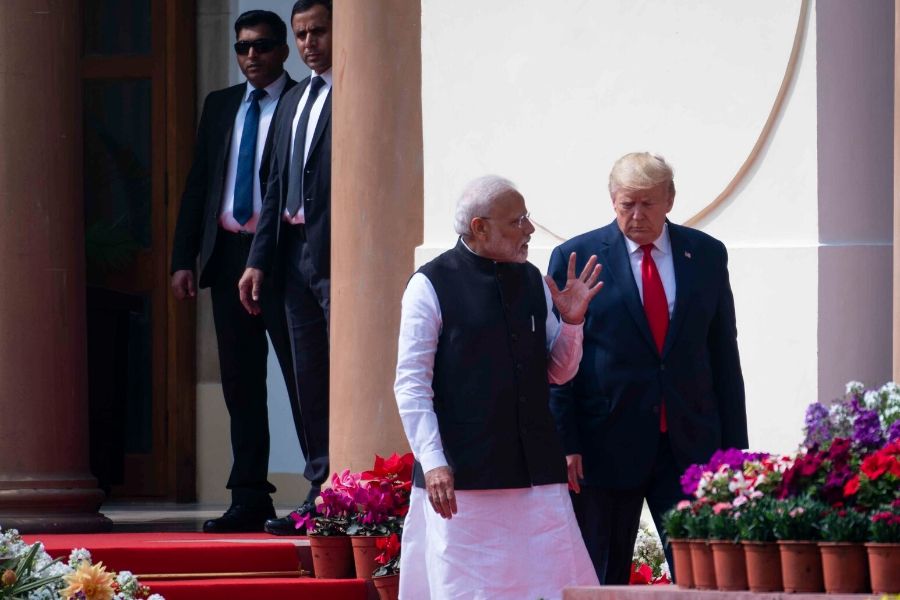
India-US trade deal remains elusive amidst Trump visit
Negotiators have been working to strike a deal between the countries since 2018. However, both Trump and Modi want to protect jobs in their own countries by fending off foreign competitors—shared attributes that make it even more difficult to strike a comprehensive agreement that would roll back trade barriers more broadly
 President Donald Trump and Indian Prime Minister Narendra Modi walk to a news conference at the Hyderabad House in New Delhi, India, Tuesday, Feb. 25, 2020. President Trump said Tuesday that he and Prime Minister Narendra Modi of India had made progress toward what he hopes will be a landmark trade agreement between the two economic giants
President Donald Trump and Indian Prime Minister Narendra Modi walk to a news conference at the Hyderabad House in New Delhi, India, Tuesday, Feb. 25, 2020. President Trump said Tuesday that he and Prime Minister Narendra Modi of India had made progress toward what he hopes will be a landmark trade agreement between the two economic giantsImage: Doug Mills/The New York Times
WASHINGTON — President Donald Trump’s visit to India includes a state dinner, tens of thousands of cheering onlookers and even a marching band on camels — but a long-awaited trade deal between the United States and India is notably absent.
For the second time since September, when Prime Minister Narendra Modi of India visited the United States, the two countries have failed to reach even a limited “mini-deal” that would increase trade for focused groups of goods, like dairy products, medical devices and Harley-Davidson motorcycles.
Negotiators from both countries have been working since 2018 on a deal that would lower Indian barriers to some American products, and restore India’s access to a program that allows goods to enter the United States tariff-free.
But the breakdown in negotiations illustrates the steep challenge in reaching a trade deal between two countries headed by populist leaders who harbor suspicions of multilateral arrangements. Both Trump and Modi want to protect jobs in their own countries by fending off foreign competitors — shared attributes that make it even more difficult to strike a comprehensive agreement that would roll back trade barriers more broadly.
“Both sides are attuned to their own political imperatives and not where the other side might have an area of accommodation,” said Nisha Biswal, president of the U.S. India Business Council, who served as assistant secretary of state for Central and South Asia during the Obama administration. “It is hard, then, to find where the common ground is where a deal could be struck.”
In appearances alongside Modi on Tuesday, Trump touted an agreement by India to purchase more than $3 billion of U.S. military equipment, as well as other purchasing agreements related to commercial airlines and natural gas.
©2019 New York Times News Service




